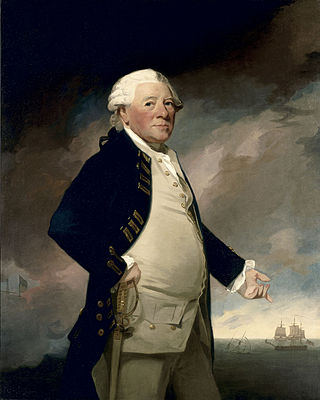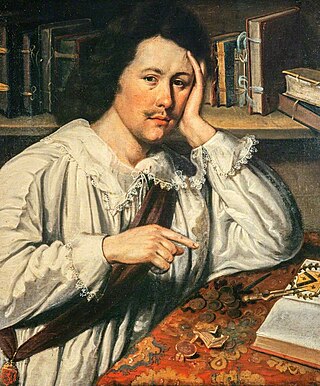There have been three baronetcies created for members of the Lyle family, all in the Baronetage of the United Kingdom. One creation is extant as of 2010.
The Lyle Baronetcy, of Greenock in the County of Renfrew, was created in the Baronetage of the United Kingdom on 26 June 1915 for the shipowner Robert Lyle. He was the younger brother of the first Baronet of the 1929 creation and the uncle of the first Baronet of the 1932 creation (see below). The title became extinct on his death in 1923.
The Lyle Baronetcy, of Glendelvine in the County of Perth, was created in the Baronetage of the United Kingdom on 26 March 1929 for the shipowner Alexander Lyle. He was the elder brother of the first Baronet of the 1915 creation (see above) and the uncle of the first Baronet of the 1932 creation (see below).
The Lyle Baronetcy, of Canford Cliffs in the Borough of Poole in the County of Dorset, was created in the Baronetage of the United Kingdom on 22 June 1932. For more information on this creation, see Baron Lyle of Westbourne. The first Baronet of this creation was the nephew of the first Baronet of the 1915 creation and of the first Baronet of the 1929 creation (see above).
The heir apparent is the present holder's son Ian Abram Lyle (born 1968).

Baron Milford is a title that has been created three times, once in the Peerage of Ireland and twice in the Peerage of the United Kingdom. All three creations have been for members of the same family. The first creation came in the Peerage of Ireland in 1776 when Sir Richard Philipps, 7th Baronet, of Picton Castle was made Baron Milford. However, this title became extinct on his death in 1823, while the baronetcy was passed on to a distant relative. The title was revived in the Peerage of the United Kingdom in 1847 when Sir Richard Philipps, 1st Baronet, of Picton Castle was created Baron Milford, of Picton Castle in the County of Pembroke. Born Richard Bulkeley Philipps Grant, he was the son of John Grant and Mary Philippa Artemisia, daughter of James Child and Mary Philippa Artemisia, daughter of Bulkeley Philipps, uncle of the first Baron of the first creation. He succeeded to the Philipps estates in 1823 and assumed the surname of Philipps the same year. In 1828 he was created a Baronet, of Picton Castle in the County of Pembroke, in the Baronetage of the United Kingdom. However, Lord Milford was childless and the titles became extinct on his death in 1857. He devised his estates to his half-brother Reverend James Henry Alexander Gwyther, who assumed the surname of Philipps. James's daughter Mary Philippa married Charles Edward Gregg Fisher, who assumed the surname of Philipps and was created a Baronet, of Picton, in 1887.

There have been three baronetcies created for persons with the surname Croft, one in the Baronetage of England and two in the Baronetage of the United Kingdom. All three creations are extant as of 2008.
Baron Lyle of Westbourne, of Canford Cliffs in the County of Dorset, was a title in the Peerage of the United Kingdom. It was created on 13 September 1945 for Sir Leonard Lyle, 1st Baronet, the former Member of Parliament for Stratford, Epping, and Bournemouth. He had already been created a Baronet, of Canford Cliffs in the County of Dorset, in the Baronetage of the United Kingdom on 22 June 1932. The title became extinct on the death of the second Baron in 1976.
Nineteen baronetcies have been created for persons with the surname Hamilton, eight in the Baronetage of Nova Scotia, one in the Baronetage of England, five in the Baronetage of Ireland, one in the Baronetage of Great Britain and four in the Baronetage of the United Kingdom. As of 2008 two creations are extant, two are dormant, two are either extinct or dormant and twelve extinct.
There have been five baronetcies created for people with the surname Napier, three in the Baronetage of England, one in the Baronetage of Nova Scotia and one in the Baronetage of the United Kingdom. As of 2014 two of the creations are extant.
There have been five baronetcies created for persons with the surname Alexander, one in the Baronetage of Nova Scotia and four in the Baronetage of the United Kingdom. Four of the creations are extant as of 2010.

There have been seven baronetcies created for persons with the surname Parker, three in the Baronetage of England, two in the Baronetage of Great Britain and two in the Baronetage of the United Kingdom. Two of the creations are extant as of 2008. Though none of the different families of baronets were related, several supplied a number of flag officers to the Royal Navy.

There have been three baronetcies created for persons with the surname Kinloch, two in the Baronetage of Nova Scotia and one in the Baronetage of the United Kingdom. Two of the creations are extant as of 2010.
There have been three baronetcies held by people with the surname Lindsay, one in the Baronetage of Nova Scotia and two in the Baronetage of the United Kingdom. One creation is extant.

There have been four baronetcies created for persons with the surname Hope, three in the Baronetage of Nova Scotia and one in the Baronetage of the United Kingdom. As of 2010 one creation is extant, one dormant and two extinct.
There have been four baronetcies created for persons with the surname Hall, one in the Baronetage of Nova Scotia and three in the Baronetage of the United Kingdom. Three of the creations are extant as of 2010.

There have been three baronetcies created for members of Clan Balfour, one in the Baronetage of Nova Scotia and two in the Baronetage of the United Kingdom. One is extant and a subsidiary title of Baron Riverdale.
There have been five baronetcies created for persons with the surname Richardson, one in the Baronetage of Nova Scotia, one in the Baronetage of Ireland and three in the Baronetage of the United Kingdom.
There have been three baronetcies created for persons with the surname Noble, all in the Baronetage of the United Kingdom.
There have been seven baronetcies created for persons with the surname Lawrence, one in the Baronetage of England, one in the Baronetage of Great Britain and five in the Baronetage of the United Kingdom.

There have been four baronetcies created for members of the Welsh Philipps family, one in the Baronetage of England and three in the Baronetage of the United Kingdom.
There have been six baronetcies created for persons with the surname King, one in the Baronetage of Ireland, one in the Baronetage of Great Britain and four in the Baronetage of the United Kingdom. Three of the creations are extant as of 2007.
There have been four baronetcies created for persons with the surname Seton, all in the Baronetage of Nova Scotia. As of 2008 one creation is extant, one dormant and two extinct.

There have been two baronetcies created for persons with the surname Duncombe, one in the Baronetage of England and one in the Baronetage of the United Kingdom. Both creations are extinct.
Baron Dunleath, of Ballywalter in the County of Down, is a title in the Peerage of the United Kingdom. It was created on 29 August 1892 for the businessman and former Conservative Member of Parliament for Downpatrick, John Mulholland. The Mulholland family were involved in the cotton and linen industry in Ulster in the north of Ireland. The first Baron's son, the second Baron, represented Londonderry North in the House of Commons as a Conservative. His grandson, the fourth Baron, was a member of the Northern Ireland Assembly for the Alliance Party. He was succeeded by his first cousin, the fifth Baron, who had already succeeded his father as second Baronet of Ballyscullion. As of 2017 the titles are held by the fifth Baron's son, the sixth Baron, who succeeded in 1997.